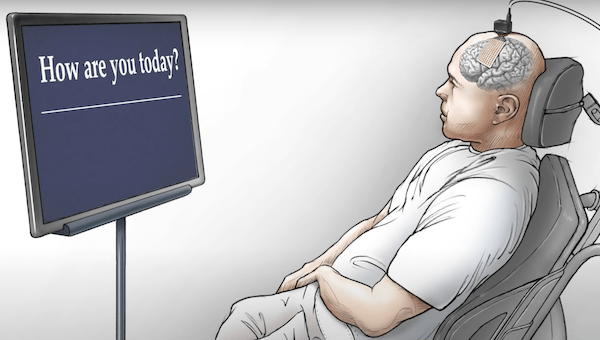
Scientists have achieved a milestone in neuroprosthetics: enabling a paralyzed man who can’t articulate to generate responses with just his mind.
Researchers at the University of California San Francisco (UCSF) have reached this world-first breakthrough using a brain implant that decodes full sentences from a patient’s brain activity.
According to TNW, the team first tested the new brain implant on a man in his late 30s, referred to as BRAVO1, who suffered a brainstem stroke in his teens which left him unable to speak. Before the procedure, he communicated by using a pointer attached to a baseball cap to point at letters on a screen.
The researchers first surgically implanted a high-density electrode array over BRAVO1’s speech motor cortex, before attaching the implant to a computer through a port in his head.
The whole trial lasted 22 hours spread across several months, with the team recording BRAVO1’s brain activity while he attempted to say a list of 50 common words. This list included words such as “water,” “family,” and “good,” from which over 1,000 sentences could be generated.
As BRAVO1 spoke, the custom neural network models were able to distinguish between neurological signals to identify which words he was trying to communicate. He was then tasked with saying different short sentences composed of those 50 words, which were then decoded from his brain signals onto a screen.
The next step in the trial involved a question-and-answer test. Upon asking BRAVO1, “How are you today?” he managed to respond, “I am very good,” which showed up on the screen. The researchers believe this is the first time brain activity of a paralyzed person has been decoded into full words and sentences.
However, the system is far from perfect. Words were decoded with a median accuracy of 74% at 15 words per minute. Now, the team is working to improve its vocabulary and rate of speech recognition.
“[The system] shows strong promise to restore communication by tapping into the brain’s natural speech machinery,” said USCF neurosurgeon Edward Chang.
Take a look at the video below to see how the brain implant system works.
[via

Leave a Reply